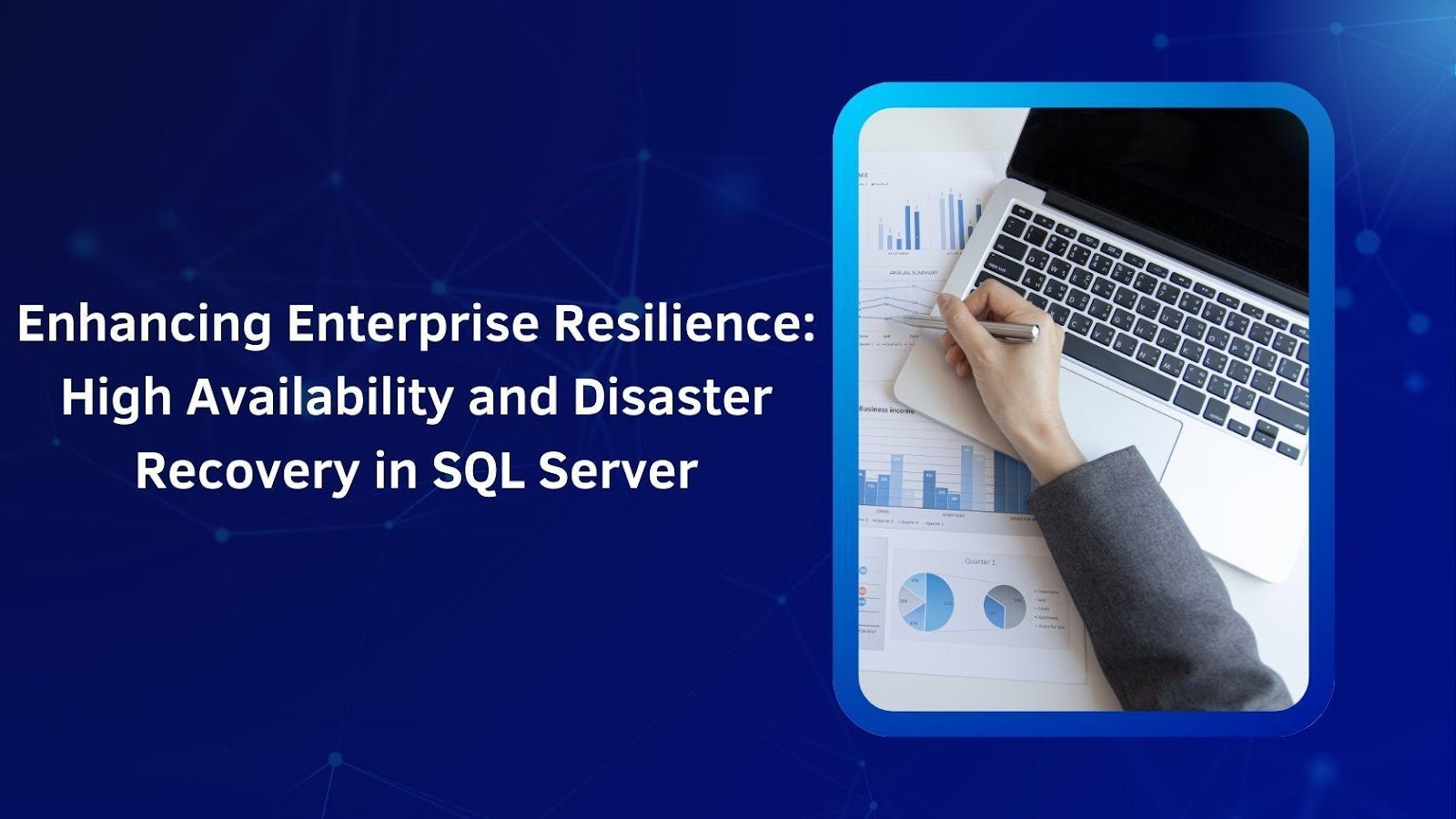In the modern digital transformation era, enterprises rely on robust database infrastructure to ensure uninterrupted operations and protect mission-critical applications from disruptions. Siva Kumar Raju Bhupathiraju explores cutting-edge advancements in SQL Server high availability and disaster recovery solutions, focusing on Always Availability Groups and Failover Clustering. His insights provide valuable strategies for IT professionals seeking to optimize database resilience.
The Architecture Behind High Availability
SQL Server’s high availability relies on advanced clustering and network configurations to maintain database continuity. At its core, Windows Server Failover Clustering (WSFC) orchestrates failover mechanisms across multiple nodes, ensuring seamless transitions during failures. Modern Windows Server versions enhance resilience with Dynamic Quorum and Dynamic Witness, which automatically adjust voting rights to maintain quorum even when nodes go offline. These features reduce the risk of cluster failure by dynamically managing cluster votes, and improving fault tolerance. By leveraging these technologies, organizations achieve high availability, minimizing downtime and ensuring database reliability in mission-critical environments.
Always On Availability Groups: A Game-Changer
Always On Availability Groups elevate SQL Server’s ability to maintain high availability by providing database-level protection with multiple secondary replicas. Organizations can choose between synchronous and asynchronous replication modes, balancing data consistency with performance. Synchronous commit mode guarantees zero data loss but incurs slight transaction latency, while asynchronous replication supports high-speed processing across geographically dispersed locations. These configurations allow enterprises to align their database strategies with operational demands.
Optimizing Network Infrastructure for Availability
Optimizing network infrastructure is crucial for ensuring high availability in enterprise systems. Synchronous Availability Groups require ultra-low latency, ideally below 10 milliseconds, to maintain performance. To achieve this, organizations implement dedicated high-availability networks, isolating transactional data from client traffic to enhance stability. Additionally, using Jumbo Frames (MTU 9000) can significantly reduce transaction latency—by up to 12%—thereby improving data synchronization efficiency. These optimizations minimize bottlenecks, ensuring seamless failover and continuous service availability. By prioritizing network design and configuration, enterprises can enhance system resilience, prevent downtime, and maintain optimal application performance, making high-availability solutions more effective in mission-critical environments.
Failover Clustering: Enhancing System Redundancy
Failover clustering enhances system redundancy by ensuring continuous availability for enterprises. Properly configured shared storage solutions like Storage Spaces Direct (S2D) and Azure Shared Disks minimize downtime during node transitions. Strategic quorum models, such as Node Majority and File Share Witness, improve cluster resilience and recovery. In multi-subnet environments, optimizing IP configurations accelerates failover and ensures seamless client connectivity. By integrating these best practices, businesses can mitigate disruptions, maintain high availability, and improve overall system reliability. A well-architected failover cluster safeguards operations against hardware failures, ensuring uninterrupted service and reducing the risk of prolonged outages.
Disaster Recovery: Preparing for the Unexpected
Enterprises must implement multi-region deployment architectures to mitigate large-scale failures. Effective disaster recovery planning requires defining strict Recovery Time Objectives (RTOs) and Recovery Point Objectives (RPOs) to align with business needs. Hybrid cloud strategies, such as combining Azure Site Recovery with SQL Always On, offer cost-effective resilience. Automated testing of disaster recovery plans enhances preparedness, reducing response times by over 40%. By proactively validating recovery mechanisms, organizations can minimize downtime, ensure data integrity, and maintain business continuity in real-world disruptions. A well-structured disaster recovery framework is essential for safeguarding operations against unexpected outages and cyber threats.
Performance Optimization: A Continuous Endeavor
Ensuring SQL Server high availability does not come at the cost of performance. Advanced monitoring tools track key performance indicators such as transaction delays, replication lag, and failover speeds. Enterprises implementing proactive monitoring detect potential outages 87% faster than those relying on reactive measures. Additionally, leveraging all-flash storage solutions optimizes transaction throughput, reducing log shipping delays by up to 65%.
In conclusion, as IT landscapes continue to evolve, enterprises must proactively refine their high availability and disaster recovery strategies to ensure business continuity. Implementing Always On Availability Groups and Failover Clustering enhances database resilience, minimizes downtime, and safeguards critical data. By integrating cloud-based solutions and performance optimization strategies, organizations can future-proof their SQL Server environments. As highlighted by Siva Kumar Raju Bhupathiraju, businesses that invest in structured high-availability architectures will achieve operational excellence and sustained growth in an increasingly digital world.



































